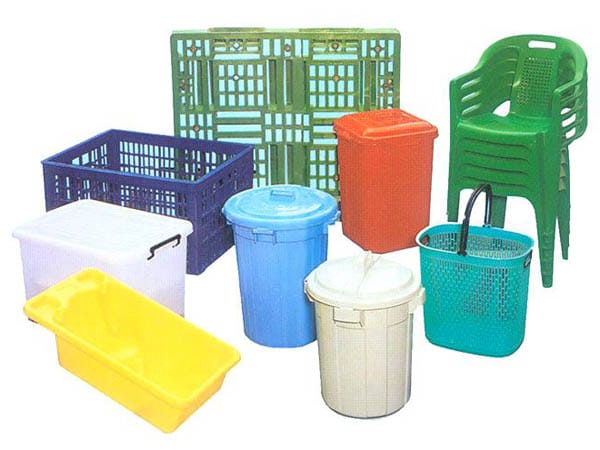One important aspect that every industrial designer and mechanical engineer should consider is the selection of the right product manufacturing process. For product development, there are many manufacturing processes that engineers can utilize; however, choosing the right one can greatly affect the cost of manufacturing as well as the success of the final product. Here is a brief on some of the most common plastic product manufacturing and metal product manufacturing processes.
Plastic Product Manufacturing Processes
For the sake of this discussion, let us assume that you need to make at least 10,000 parts. For less quantity, rapid prototyping or 3D printing processes are more appropriate and economical.
Here are some plastic manufacturing processes that plastic product manufacturers commonly utilize to mass produce plastic parts and components.
- Injection Molding: Plastic injection molding is the most preferred process that produces parts and components with the lowest cost per part. The process is ideal for moderately sized production runs. The production tooling cost is a bit of a concern, especially if you do not have a definitive mold for the plastic part. Nevertheless, you can use aluminum molds until you get the definitive mold design. Once you have the definitive mold design, you can shift to stainless steel molds, which are durable and suitable for a high-volume production.
- CNC Machining: Computer numerical control machining or just CNC machining is the process in which computers play a big role in controlling the CNC machines like mills, plasma cutters, drills, etc. CNC machining is an ideal process to employ for small-sized production runs for small parts. The process allows precision and good surface finish too. The drawback of CNC machining is the high costs. Nevertheless, CNC machining offers automation, which eliminates manual labor and errors caused by manual laborers.
- Rotational Molding: Rotational molding is an appropriate plastic product manufacturing process to produce soft, rubbery parts. Both simple and complex parts can be produced using rotational molding. It also helps produce several pieces of a single part, which can then be assembled together. This eliminates overall fabrication costs. Rotational molding also eliminates significant wastage of material. The drawback of this process is it does not facilitate precision. And just like plastic injection molding, the production tooling cost is a concern.
- Thermoforming: Thermoforming is a suitable process to manufacture large plastic parts. The production tooling cost is lower than other plastic product manufacturing processes. The production time is also lower. The disadvantage of thermoforming is that it does not offer precision. Intricate shapes and good surface finish are also hard to achieve with thermoforming.
Metal Product Manufacturing Processes
Metal product manufacturing is more expensive than plastic product manufacturing because metals are more costly than plastic materials. It is possible to rapid prototype or 3D print some metal parts, but it will prove uneconomical.
Here are some metal manufacturing processes that product manufacturers commonly utilize to mass produce metal parts and components.
- CNC Machining: Aside from the plastic parts, with CNC machining, it is possible to produce metal parts. Thanks to computers, playing a role in controlling CNC machines, the process is appropriate for making complex parts. Precision is easy to achieve with CNC machining. The drawback of CNC machining is the high costs, even for producing small parts.
- Die Casting: Die casting is a suitable metal product manufacturing process to produce metal parts with high dimensional accuracy and smooth surface finish. The process facilitates rapid production rates. The per part cost is also lower than other metal manufacturing processes. The drawback, however, is the high production tooling cost – perhaps it has the highest tooling cost.
- Investment Casting: One of the oldest processes, investment casting is appropriate to manufacture complex parts with a very smooth surface. The process also offers exceptional dimensional accuracy. The drawback, aside from the cost, is the long production-cycle times. For high-volume manufacturing, the process could prove to be expensive and infeasible.
- Sand Casting: Sand casting is one of the most popular processes to produce small and complex metal parts. Instead of metal molds, this process utilizes sand molds. This substantially reduces the cost. With sand casting, it is possible to achieve high dimensional accuracy. The process is suitable for low to medium production runs, but for high volumes, it will prove to be infeasible.
Aside from these processes, there are many other plastic product manufacturing processes and metal product manufacturing processes. Choosing the right one will affect the cost of manufacturing and the success of the final product.
Looking for a good plastic product manufacturer in California? Look no further than GID Development Corporation. A product development company, based in California, GID Development Corporation provides exceptional product design, product prototyping, plastic product manufacturing, 3D printing and other services. With their experience and expertise in injection molding, CNC machining and other processes, the professional industrial and mechanical engineers at GID Development Corporation can help you develop exceptional new products.
Have any queries regarding plastic product manufacturing? Just call Jim Grimes at 714-323-1052 between 8:00 AM to 5:00 PM PST, for a FREE 15-minute telephonic conference. He will answer to various questions regarding plastic product manufacturing and rapid prototyping.






